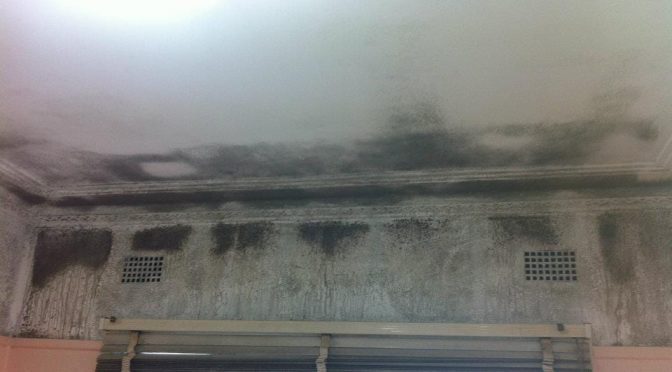
Mould grows in damp, dark and moist conditions. When mould appears in a home it can cause problems. It’s important to understand how to get rid of mould on walls and around the home.
Mould is not only unsightly, smelly and generally unpleasant, but if left untreated mould can be expensive to remove. Persistent mould can also damage the structure of a property.
It’s critical for residents to remove mould quickly and effectively. Even tenants, landlords and property managers can be held responsible for mould issues, depending on its cause.
Understand how to get rid of mould on walls and around the home by learning why mould grows on walls, the types of mould on walls and how to remove mould.
Why does mould grow on walls?
Mould can grow on almost anything provided it has a source of food and water. When indoor conditions are damp, wet or moist, dirty and or dusty mould has everything it needs to grow.
Types of mould on walls
Although there are 100,000s of different types of moulds, it is important to recognise the most common ones that appear in homes.
Alternaria
Commonly grows in bathrooms and under sinks.
Aspergillus
Commonly grows on walls and on building material.
Cladosporium
Commonly grows on poorly ventilated fabrics, carpets or wooden surfaces.
Penicillium
Commonly grows in water damaged fabrics, building materials or home areas.
Stachybotrys (Black Mould)
Commonly grows on damp and wet walls, carpets and around areas like laundries and bathrooms.
How does mould form on walls?
It’s best to think of mould spores as invisible tiny seeds that float around and can land anywhere. When mould spores land in a wet, damp or moist spot with a food source of bacteria, dirt and or dust they germinate. In most dwellings it is common for internal condensation to form on wall and ceiling surfaces normally towards the southern aspect as this is the coldest, dampest area in most dwellings. These areas also receive minimal natural daily light and the warmth generated by the Sun.
What does mould look like?
There are many different types of indoor mould with different appearances. Moulds tend to have a velvety/cotton texture and come in a variety of colours. Generally indoor moulds have certain characteristics.
If you’re worried about mould, look out for:
- Darker than usual grouting between tiles in bathrooms, toilets or laundries.
- Discoloured spotty cluster/s appearing on walls or ceilings.
- Discoloured spots on areas of carpeting, fabrics or upholstered furniture.
- Discoloured areas on wooden furniture or wooden home features.
- Flaking paint or peeling wallpaper.
- Musty smells in poorly ventilated areas recently exposed to moisture.
Removing mould on walls
- Inspect the affected area and find the reason for the problem. This will ensure the mould isn’t a recurring problem.
- It is important to ventilate the affected area of the home. Let in fresh air and open as many doors and windows you can to allow air flow at the right time of day and in the right weather conditions. This helps to dry off any excess moisture.
- Allow light into the area. Light can prevent mould and even help to stop the spread of mould spores. Opening curtains and blinds during the day will help to maximise those all important daylight hours.
- Call in the professionals. We can help to remove the problem and let you know how to stop it returning in the future. The local supermarket or DIY store household products claim to get rid of mould but these domestic treatments are usually not strong enough to deal with the problem alone. They may remove the appearance and smell of mould in the short-term but they can’t solve the underlying growth. Don’t just remove mould from sight and smell, remove mould for good by fixing the cause!
- Make sure you take the time to maintain a regular cleaning schedule. While life can often get in the way of a regular cleaning routine, not having a regular cleaning routine can promote mould spores to multiply and breed. Add vacuuming, sweeping and mopping to your weekly cleaning list.
Mould inspections
It is important to identify the cause/s of excess moisture problems and find simple, common-sense ways to avoid future mould problems. Mould Removal Australia has the expertise and experience to find and resolve persistent mould issues.
Mould on bedroom walls
Mould Removal Australia has a Premium Eco Fogging System that targets mould spores & mould mites both airborne and on fittings, blinds, curtains, carpets and other surfaces and items.
Mould in kitchen and bathroom walls
Mould Removal Australia is highly effective at removing and killing mould, producing a clean, fresh finish with no black residue remaining (in the majority of cases).
Get Mould Removal Australia
Nobody should have to live in a home that is blighted by mould. Mould needs to be taken care of immediately and permanently before it harms your home and hip-pocket. If you’re concerned about mould, look out for it at your home and make sure you call the professionals at Mould Removal Australia to remove it effectively.
For more information about mould and our services see our website.
Get a free online quote
If you have a mould problem please do not hesitate to bring in the help of the professionals at Mould Removal Australia.
Mould Removal Australia services locations across Sydney, Blue Mountains, Wollongong, Central Coast, Newcastle, Hunter Valley and Port Stephens areas.
To get a free online quote, book an appointment or ask any mould-related questions, please get in touch using our Contact Form or call us on 1300 681 034 and we’ll get back to you very soon.
